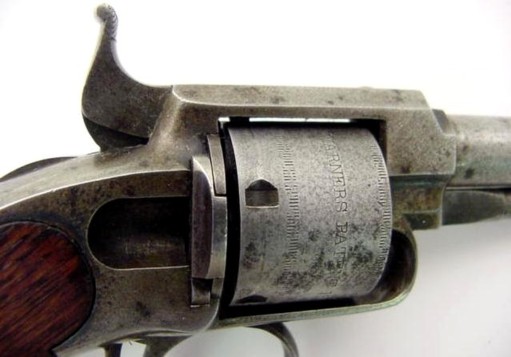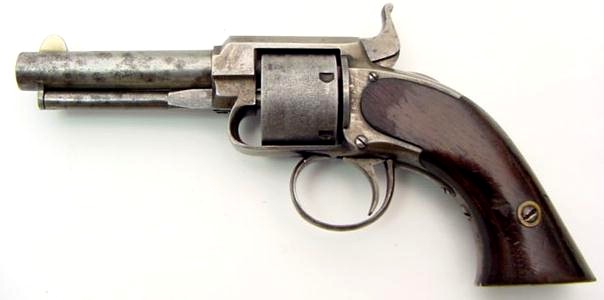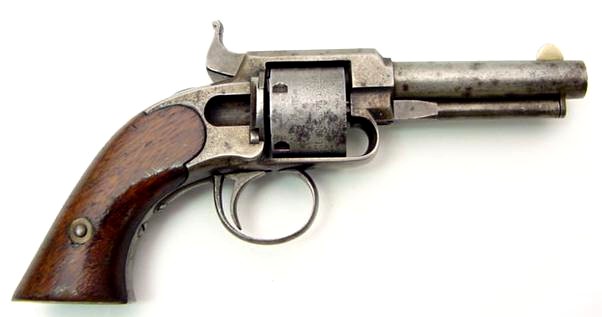
WARNER
This Warner 1857 pistol appears (and it is indeed this one) on page 288 of the book "American Weapons - 1978 Edition).






JAMES WARNER
Ultra
rare Springfield Warner with rammer variant belt revolver.
Less then 100 made and
probably
only 10 to 15 in
existence.
Has both
original triggers and the rotation system is fully operational.
Cylinder
scene is light (as made) but 100 % present.. Overall medium brown with a frame
that is light grey.
Photos Littlegun
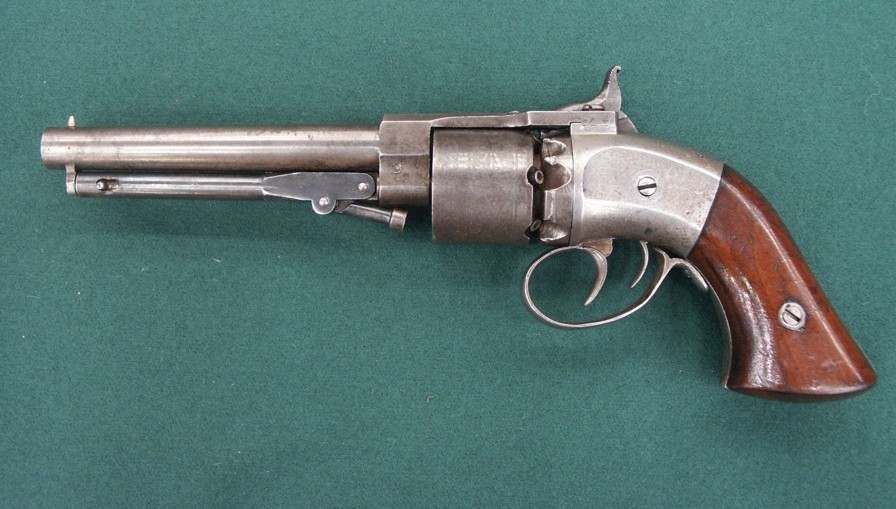
THE JAMES WARNER 1851 POCKET REVOLVER
I have pleasure in presenting my last purchase, being a very scarce small American percussion revolver of the pre- Civil War era, patented by James Warner and produced at the Springfield Armory of Springfield, Massachussets.
We are looking at a small .28 caliber pocket revolver, 6 rounds, extremely scarce since only 350 were made around 1851. James Warner has patented various revolvers in different calibers and had them manufactured by the Springfield Armory.
While a few thousands of the other models were made, this one has seen only a very small production. It was destined to the civilian market only.
Characteristics:
Percussion revolver, 6 shot, .28 caliber
Smooth bore
Double trigger, single action
Hammer placed in the middle, slightly decentered to the right, in order to hit the nipples on the right side of the top strap.
Barrel lug has a hole for the cylinder axis and is held in place by a top strap which is attached to the rear of the frame by a screw. The top strap is designed to make the whole gun sturdier.
Nipples in oblique to the rear of the cylinder and placed at the right side of the chambers so that they are exposed at the right side of the top strap while the chambers are in alignment with the barrel.
Markings: n° 36 inside the right cover plate and on the grip strap - no other marks
Original finish: blued
Grip plates in varnished walnut
The hammer has a halfcocked notch. A recess has been cut on both sides of the barrel lug, in order to allow front loading. There is no attached loading lever.
The rear of the cylinder shows two concentric rows of teeth, the outer one having reverse inclination. The inner one is the ratchet that allows the pawl to turn the cylinder, while the outer teeth act as cylinder stops (see pictures).
System:
The gun can only shoot in the single-action mode.
When the hammer is pulled at full cock, the cylinder does not revolve, unlike on all conventional revolvers. Once the hammer cocked, the shooter squeezes the fore trigger, which causes the cylinder to turn one sixth of a revolution to bring a chamber in alignment with the barrel. At the end of its way, the fore trigger pushes the rear one back (the actual trigger), causing the hammer to fall. At the same time, the head of the very special pawl comes to lay in the channel cut between the two rows of teeth on the rear face of the cylinder, locking the whole thing in the right position. So the pawl acts also as the cylinder locking cam.
The cylinder cannot be turned when the hammer is in the resting position.
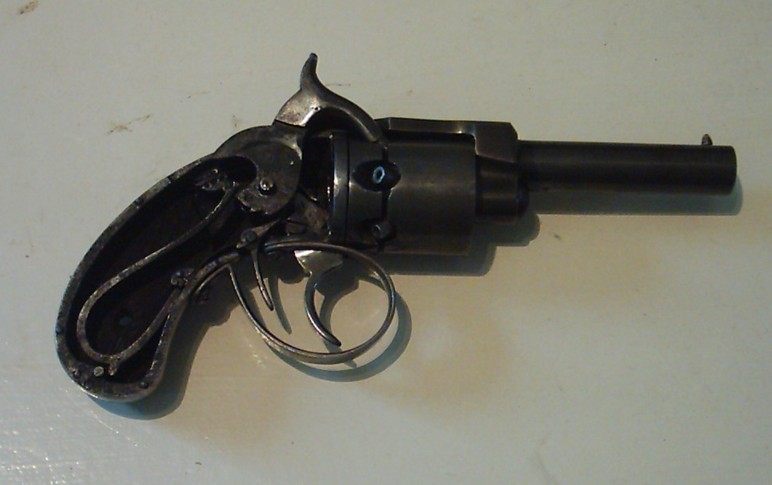
Photo 5
Picture 5 shows the weapon open, right cover plate and grip plate removed. One will notice the very special shape of the main spring, which has also an integral cam that fits in a notch on the grip strap. This "tear-shaped" spring makes the trigger very smooth and strong. The two hammer notches are clearly visible, as well as the trigger nose and its back strap, which lays under a small flat return spring which is attached to the frame.
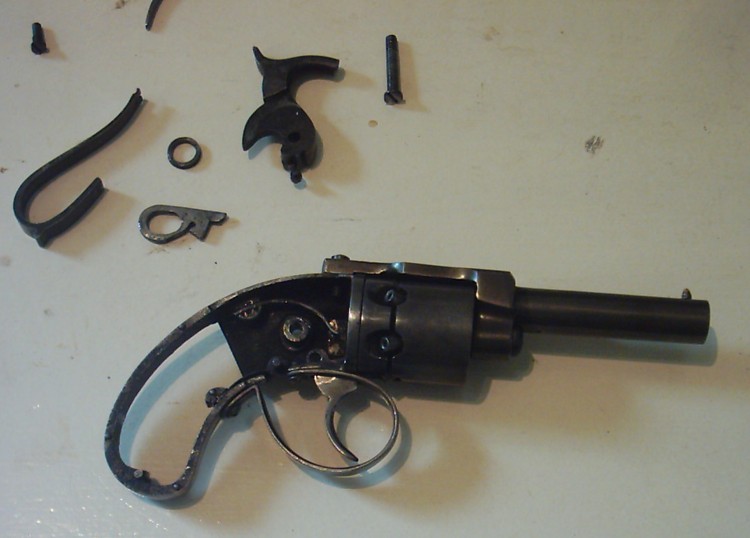
Photo 6
Picture 6 shows the hammer and main spring disassembled. The fore trigger is clearly visible. It is permanently attached to the frame and has a transverse screw through its upper part. That screw is if fact a transverse axis that comes under the pawl and pushes it up in order to actuate the revolution of the cylinder. A removable screw instead of a fixed plot renders assembling of the lock mechanism far more easier.
The pawl is the flat lever which can be seen behind the foretrigger. It has an oval hole, in which comes a round protection ring, and articulates around the central screw lug.
Above the pawl a curvy flat spring is visible. That spring is in fact the return spring that pushes the pawl and the foretrigger back in place after shooting.
The next picture shows the disassembled pawl and its ring. The pawl has a flat part under its fore end, on which the transverse screw of the foretrigger lays in order to push it up. The rather broad pawl nose has a curvy side which facilitates its movements into the channel cut between the ratchet teeth.
Although it looks simple, the make of such a mechanism requires a skilled engineer. The system allows far less tolerance than any other conventional system, and is probably very sensitive to wear.
The complicated inner lock mechanism has nothing common with the conventional ones, and actually this gun should not be called a "revolver". That name was used for the first time by Samuel Colt, who was the very first to apply for a patent on the arm system called "revolver". In his very first patent description, Colt says literally that " the phases of unlocking the cylinder, turning it around its axis for a portion of revolution to bring the next chamber in alignment with the barrel, and relocking it in the new position, are automatically generated by the action of cocking the hammer" (in single and double action).
Since on the James Warner the hammer is totally independent, the gun does not meet the initial Colt patent specifications, and is not a revolver. Fanatics would call it a "revolving pistol", or a "multi-chambered pistol".
Let me also tell you that the reassembling of this little gun takes about half an hour of real fun with hundreds of the worst curses and swears one can imagine.
A real "gunsmith's nightmare"...
Marcel
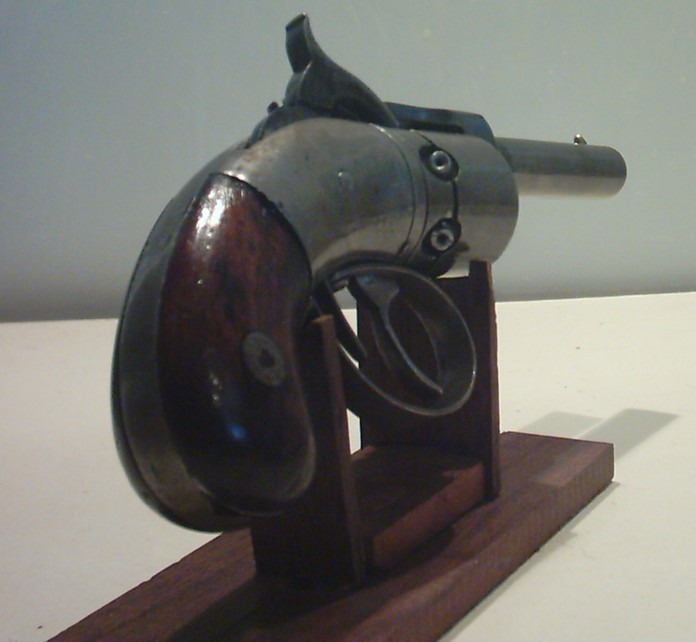
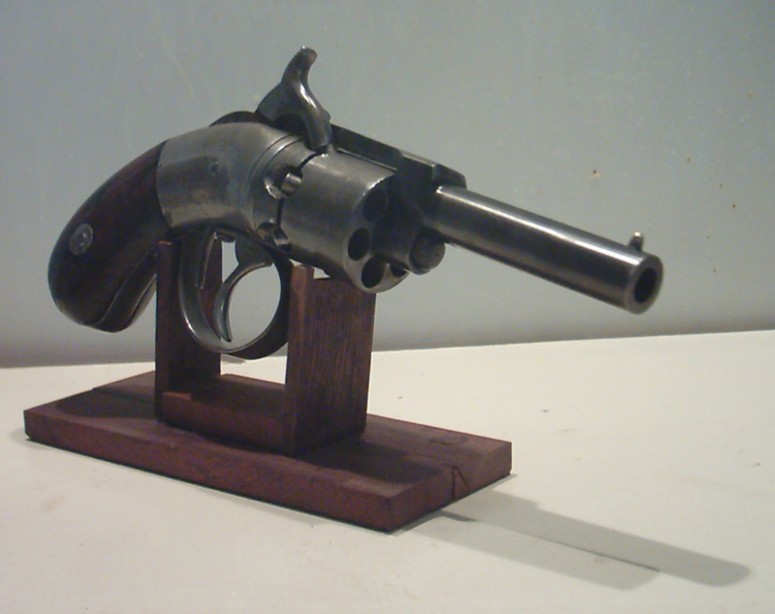
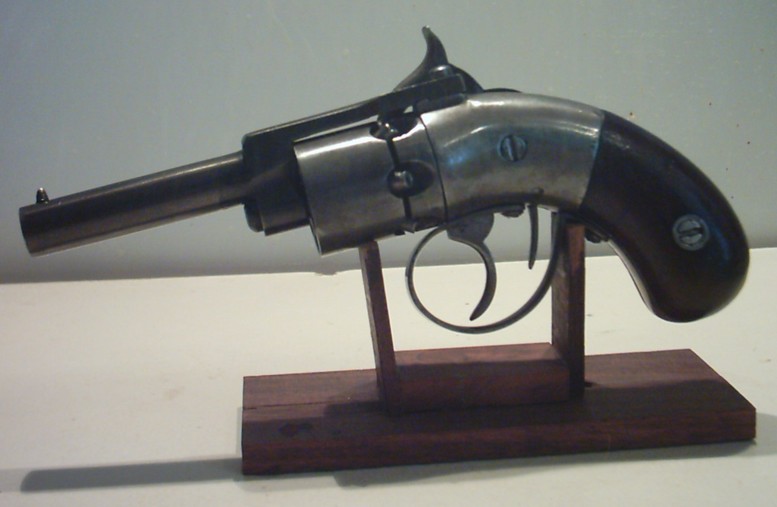
James Warner
"cap and ball" pocket revolver
Circa 1857
Photos send by Roger Papke (American collector) with my grateful thanks.
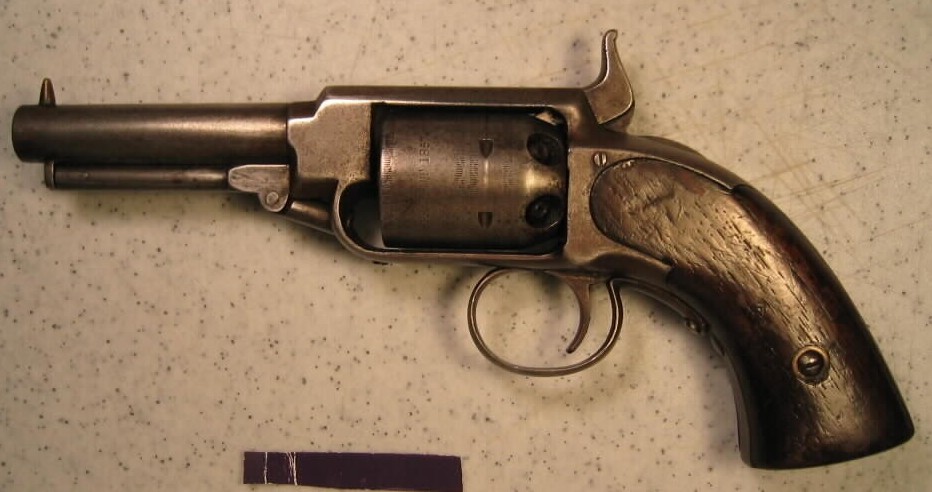
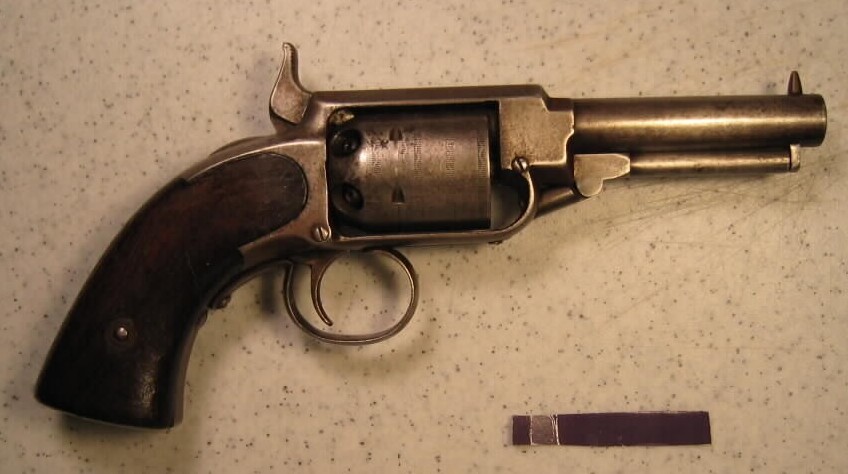
James Warner
Second model, 1st variation
Calibre .28
